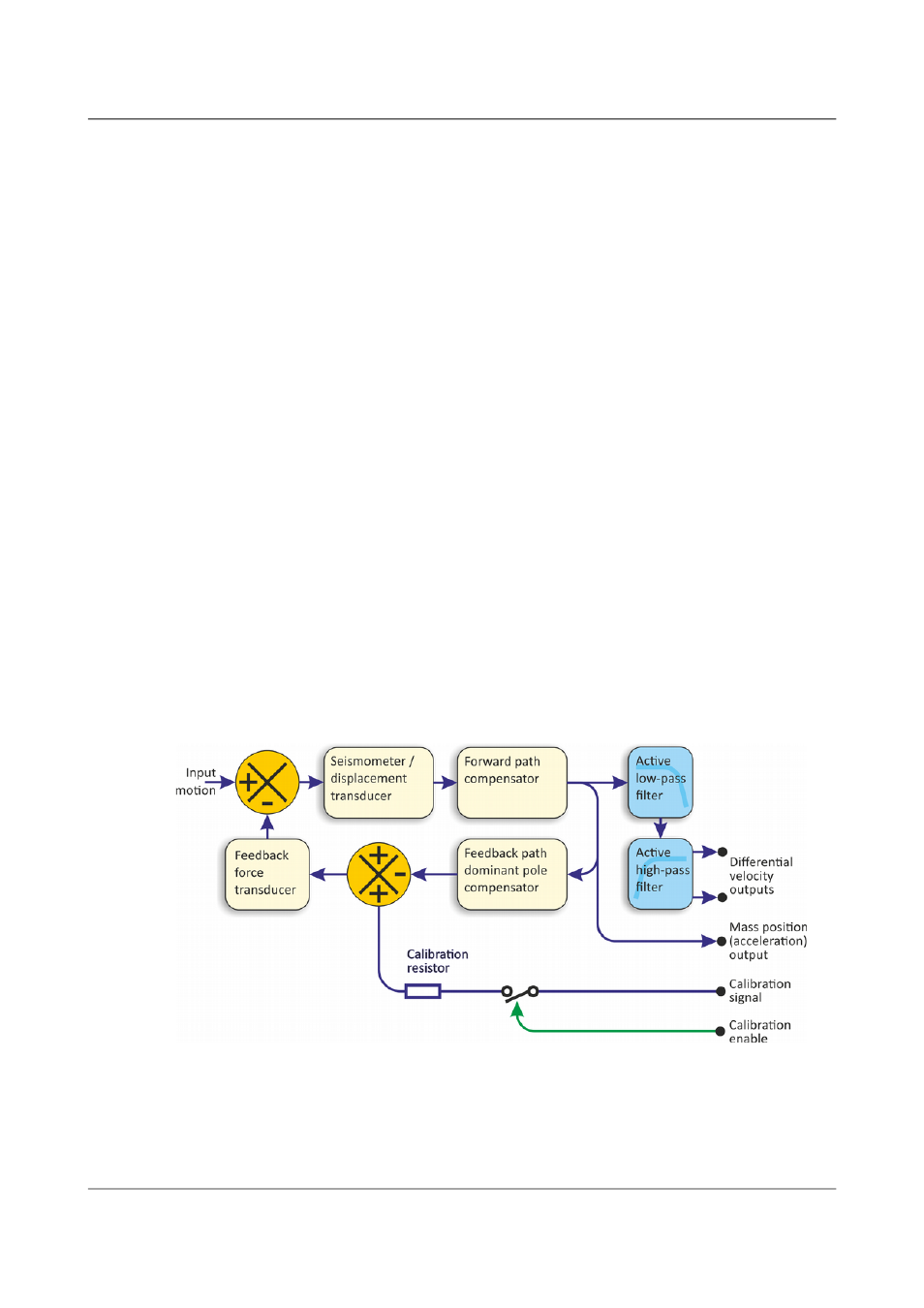Guralp Systems CMG-3ESPCD User Manual
Page 82

CMG-3ESPCD Digital Broadband Seismometer
Inside the 3ESPCD
Force feedback seismometers of this type rely on the assumption that the force
transducer produces a field of constant strength. The magnetic circuit and
magnet/pole assembly in the CMG-3ESPCD are designed so that the field
strength from the feedback transducer is constant over large deflections and
current levels.
In a force-feedback seismometer, it is essential to monitor the acceleration
output. This provides the position of the inertial mass. The sensor should
always be operated with the mass centred, so that the response to input
acceleration is linear.
There are two types of feedback system which can be used in a CMG-3ESPCD
instrument, known as hybrid and conventional-response feedback.
7.1.3.1 Hybrid feedback
The hybrid feedback circuit contains a single capacitor in parallel with a
resistor, resulting in a single dominant pole at 0.033 Hz (30 seconds). Below
this frequency, the response of the seismometer is flat to ground acceleration;
above it, the response is flat to velocity. (Other values for the
acceleration-velocity corner can be provided upon request.)
Hybrid-feedback systems provide a stable response, particularly for portable
systems, with a high saturation level at high frequencies and a high dynamic
range at long periods. An active low-pass filter provides a high-frequency
cut-off point at a frequency you specify. Without the filter, the velocity
response is flat up to 100 Hz. Outside the feedback loop, there is an active
high-pass filter with a corner frequency of 0.01 Hz (100 s) or 0.005 Hz (200 s),
which serves to remove any DC offsets.
7.1.3.2 Conventional-response feedback
The conventional-response feedback system has an additional parallel
feedback circuit, consisting of a non-inverting integrator in series with a
resistor.
82
Issue B - November 2013